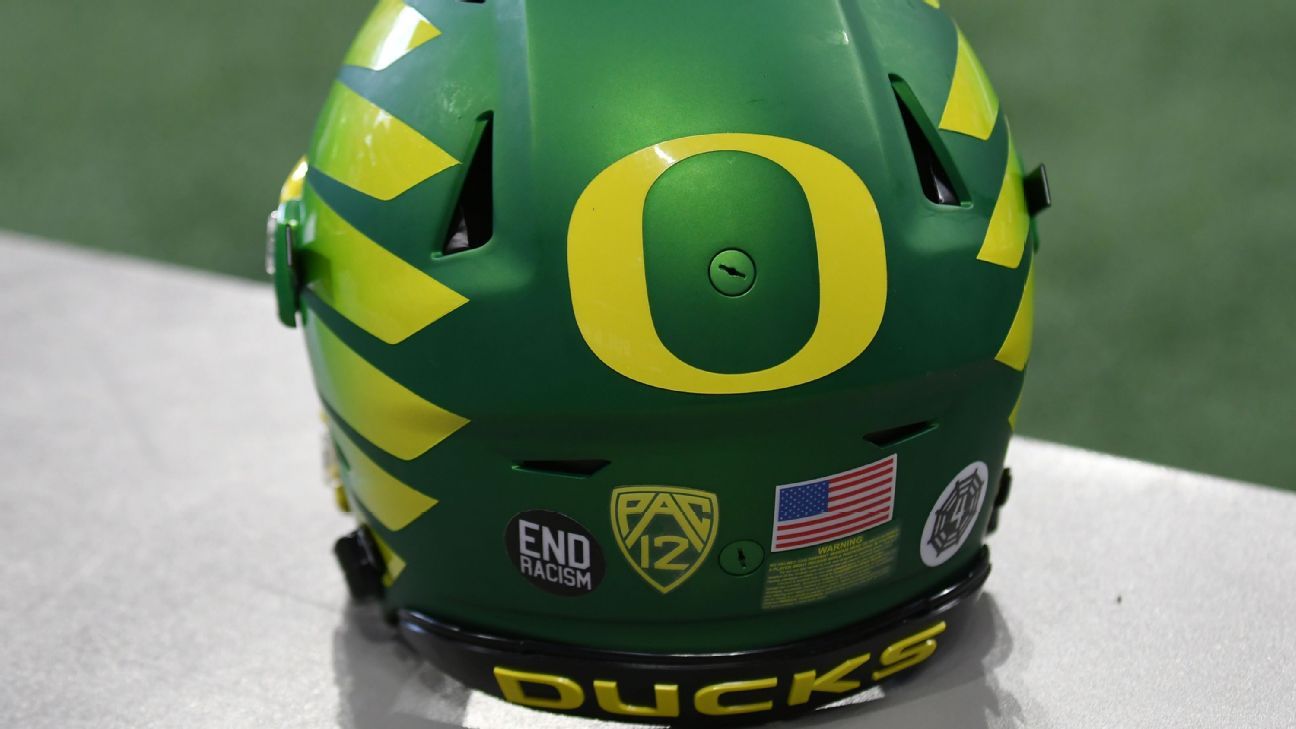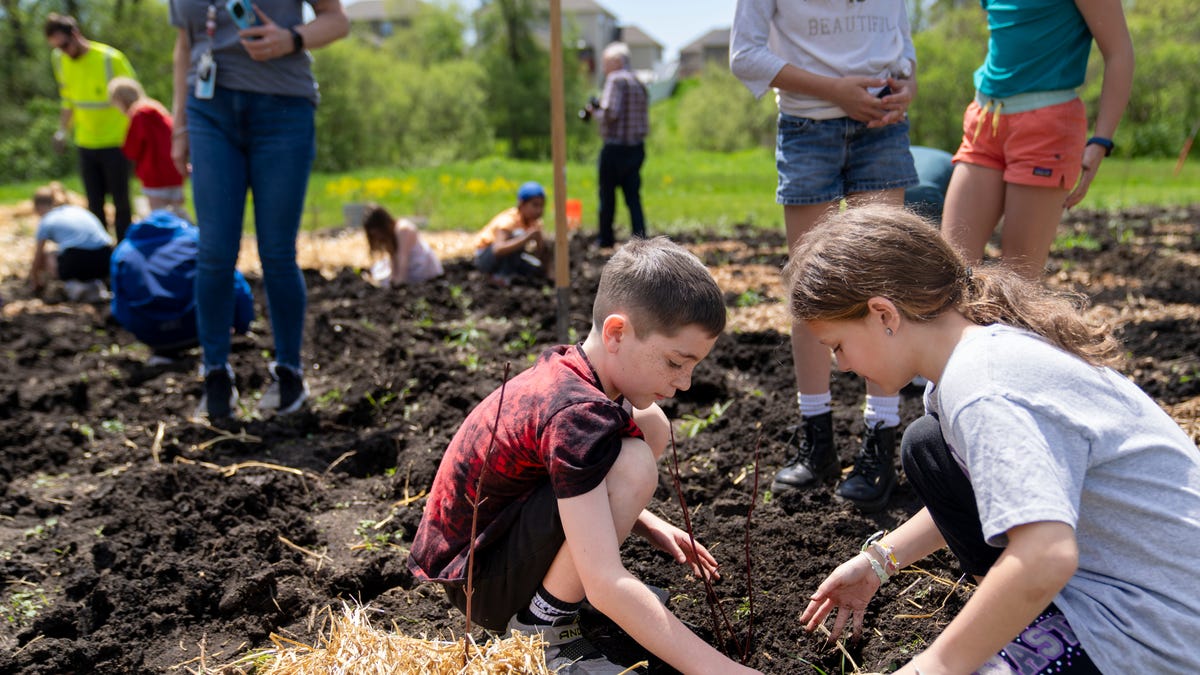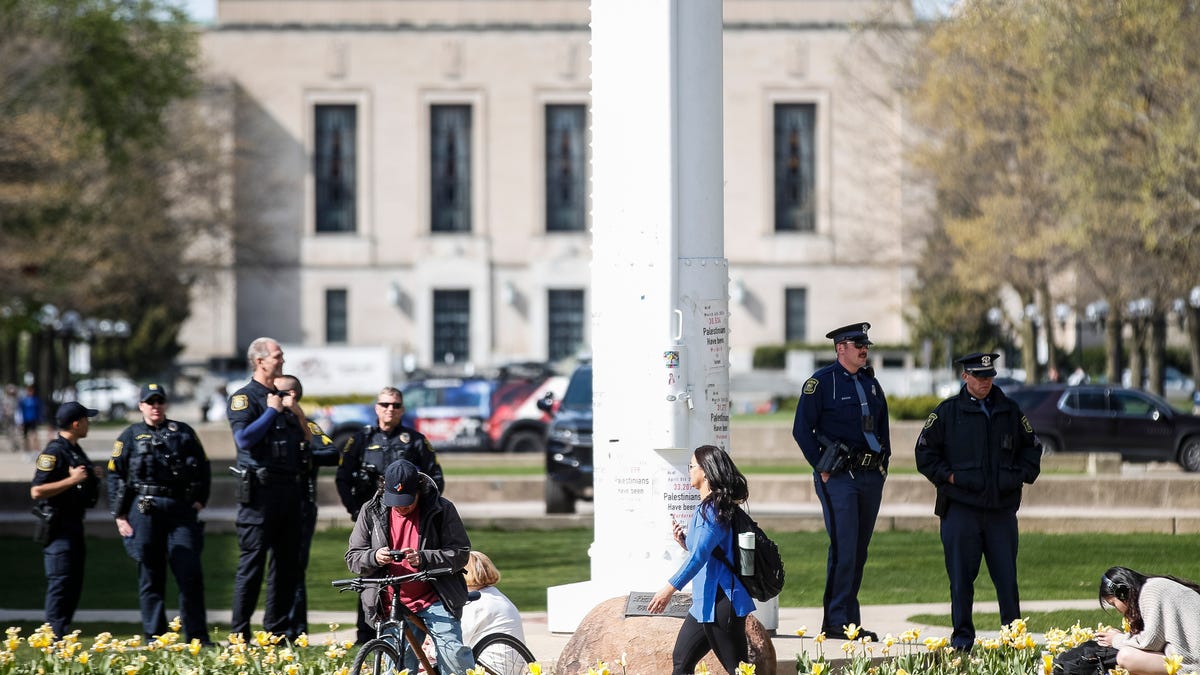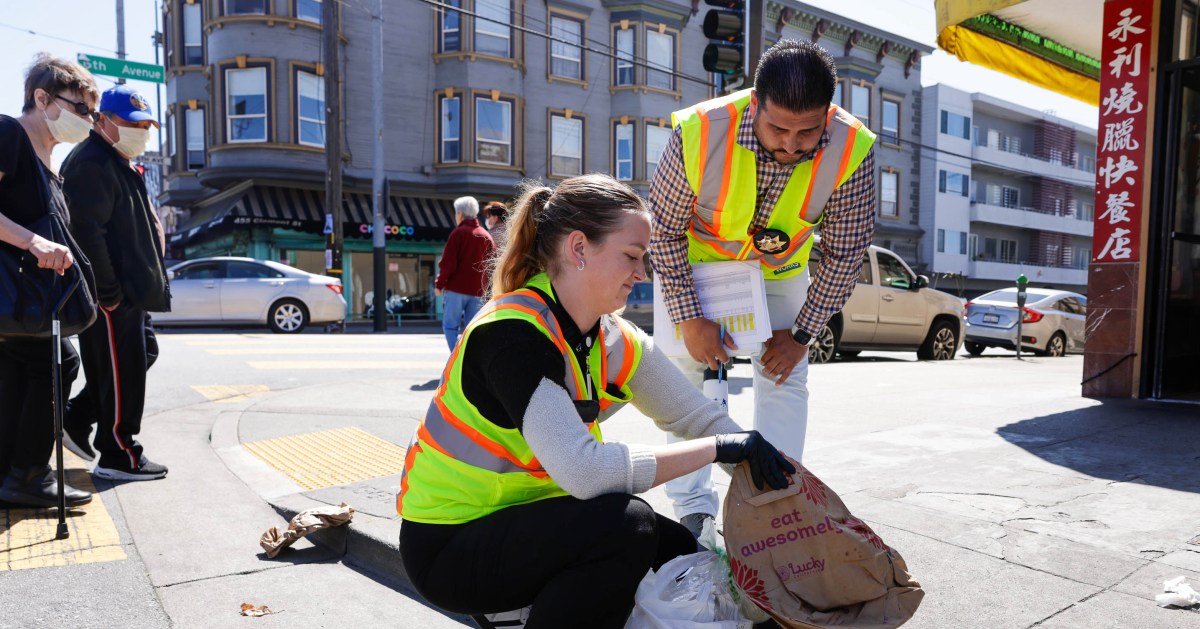Oregon
Why California and Oregon Broke With the CDC

Two blue states acknowledge that health precautions need to be balanced with other priorities.
Recently, California surprised the public-health world by easing the state’s recommendations for asymptomatic people who test positive for COVID. The state previously urged them to isolate for five days to avoid infecting others. In a January memo, though, California Public Health Officer Tomás Aragón declared that “there is no infectious period for the purpose of isolation or exclusion.”
This policy change in the nation’s most populous state—which followed a similar move by Oregon last year—represents a remarkable break from the CDC, the federal agency whose recommendations have guided public-health policies since the coronavirus first arrived in the United States. Four years after the pandemic began, three years after vaccines gave Americans the option of protecting themselves, and a year after the Biden administration let the official public-health emergency lapse, the CDC still calls for five days of isolation even in asymptomatic COVID cases.
The question now is whether the other 48 states and the CDC itself will follow California and Oregon. Health and Human Services Secretary Xavier Becerra, whose department oversees the CDC, defended the disease-control agency’s current guidelines last week, while also noting that they are not mandatory. Emergency measures are more easily imposed than rescinded. Public-health agencies are good at telling people what to avoid but not at giving them permission to return to normal lives.
California and Oregon, two reliably blue states, are in a good position to lead; they were among the more cautious states at the height of the pandemic, and they are right to acknowledge that coronavirus-safety rules need to be weighed against other priorities—such as the need to keep schools and workplaces functioning. Public health has to take account of how members of the general public typically interact with one another in the world, and officials in both California and Oregon have explicitly cited the need to ease social disruptions caused by isolation policies. As California’s new guidance points out, COVID rules have effects that are “disproportionate to recommendations for the prevention of other endemic respiratory viral infections” such as influenza or RSV.
Before the policy change, one Oregon public-health official told The New York Times, children who appeared well but tested positive for COVID were being deprived of “a solid week of school,” and some adults without sick leave were missing work despite feeling healthy. The consequences of testing positive have been far-reaching enough under CDC rules that people have a strong incentive not to get tested in the first place.
Strict isolation requirements made far more sense earlier in the pandemic. The overwhelming majority of Americans have acquired some protection against the virus, either through vaccination, previous infection, or both—and have the option of getting more, via new booster shots that most people have yet to receive.
The policy change in California and Oregon has prompted some reasonable objections: The disease has killed more than 1 million Americans and was the third-leading cause of death last year. The decision was worrisome to those who see rising infection numbers caused by the latest winter surge of a virus that keeps mutating and keeps showing up in wastewater. Still, Oregon officials say the state’s infection rates since easing its isolation guidelines are in sync with the rest of the country’s.
Other objections are harder to justify as a basis for keeping people away from work or school. Some commentators have speculated that the rollback of rules by two liberal states acting of their own volition will encourage partisan attacks on COVID precautions more generally. But public-health restrictions are likeliest to elicit compliance when they’re narrowly tailored to current conditions and when health officials acknowledge the necessity to balance disease control and other societal needs.
Perhaps the CDC will eventually come around to California’s point of view. Ending school disruptions should be among the government’s highest priorities. Education Secretary Miguel Cardona is worried about chronic post-pandemic absenteeism across the country and is eager to bring student attendance back to normal.
California and Oregon have hardly given up on all safety precautions. Both states tell people who are sick with COVID to stay home until they are fever-free and recovering from any other symptoms, and they encourage people who test positive to mask around others and avoid contact with vulnerable people. Employees of California hospitals and nursing homes and certain other settings are still subject to more stringent rules than the new state guidelines for the general public.
Instructing the public to relax but not totally relax requires a tricky balance, but that shouldn’t keep individual states from trying.

Oregon
South Central Oregon Cascades and Siskiyou Mountains and Southern Oregon Cascades under a winter weather advisory Saturday – up to 7 inches of snow

The National Weather Service issued a winter weather advisory at 7:59 p.m. on Friday valid for Saturday between 2 a.m. and 11 p.m. for South Central Oregon Cascades and Siskiyou Mountains and Southern Oregon Cascades.
The weather service describes, “Snow expected above 4000 feet. Total snow accumulations of 3 to 7 inches. Winds gusting as high as 40 mph.”
“Plan on slippery road conditions,” adds the weather service.
Winter weather driving safety: Navigating the chill with expert tips from the weather service
Winter weather can make driving treacherous, leading to over 6,000 weather-related vehicle fatalities and over 480,000 injuries each year. When traveling during snow or freezing rain, prioritize safety by slowing down. In near-freezing temperatures, it’s safest to assume that icy conditions exist on roadways and adjust your driving accordingly. Be cautious of ice accumulating on power lines or tree branches, which can lead to snapping and falling hazards. If possible, avoid driving in such conditions. If you must venture out, opt for routes with fewer trees and power lines. Never touch a downed power line, and immediately dial 911 if you come across one. Here are additional winter driving tips from the weather service:
1. Share your travel plans:
When traveling out of town in hazardous winter weather, inform your family or friends of your destination, planned route, and estimated time of arrival.
2. Prepare your vehicle:
Ensure your gas tank is full and equip your vehicle with essential winter supplies such as a windshield scraper, jumper cables, a small shovel, flashlight, cell phone, blanket, extra warm clothing, drinking water, and high-calorie non-perishable food.
3. Stay calm when stranded:
If you become stranded, remain composed. Inform someone about your situation and location. Avoid attempting to walk to safety. Indicate that you need assistance by attaching a cloth to your car’s antenna or mirror, and make your vehicle more visible by using the dome light and flashers
4. Be aware of snow plows:
Keep an eye out for snow plows and provide them with ample room to pass. Only overtake a plow when you have a clear view of the road ahead.
5. Check road conditions:
Before embarking on your journey, verify the current road conditions to make informed travel decisions.
These winter driving tips from the weather service are your key to a safer journey on snow-covered roads. By following these guidelines, you can significantly reduce the risk of accidents and ensure your well-being during challenging winter weather.
Advance Local Weather Alerts is a service provided by United Robots, which uses machine learning to compile the latest data from the National Weather Service.
Oregon
Oregon baseball series opener against No. 25 Utah postponed, doubleheader set for Saturday
EUGENE — Friday’s series opener between Oregon and No. 25 Utah is postponed due to rain and a doubleheader is set for Saturday.
The Ducks (30-14, 12-9 Pac-12) will take on the Utes (29-13, 14-7) beginning at 11:05 a.m. Saturday at PK Park. The second game will begin 45 minutes after the first game ends.
Sunday’s series finale is still scheduled for 12:05 p.m.
Oregon
ESPN’s No. 38 recruit LB Wyatt commits to Oregon

Oregon’s defense received a significant boost Friday as outside linebacker Nasir Wyatt, ESPN’s No. 38 recruit in the 2025 class and No. 2 player from California, announced his commitment to play for the Ducks.
Wyatt, who plays for Southern California power Mater Dei High School in Santa Ana, California, chose Oregon over Tennessee and Texas, where he also took visits. He told ESPN that the experience Oregon defensive coordinator Tosh Lupoi and coach Dan Lanning had in developing top outside linebackers steered him toward the program.
“Tosh, he already has a plan put in store for me that allows me to do everything I do best,” Wyatt told ESPN. “When I go up there, he’s going to be able to teach me so much about the game, just because him and Lanning have so much edge background. [Lanning] being the defensive coordinator at Georgia, he had Travon Walker and all those guys from that defense that went in the first round. Having him at Oregon as the head coach, it’s having two defensive-minded coaches to better my edge skills.
“I couldn’t pass up on the opportunity.”
The 6-foot-3, 215-pound Wyatt had 14 sacks and 21 tackles for loss last season for Mater Dei. He said both Lupoi and Lanning made comparisons between his game and those of players from their past stops, such as Alabama’s Rashaan Evans, whom Lupoi coached as a Tide assistant, and Georgia’s Nolan Smith.
“Coach Lanning said a lot of my measurements resemble [Smith] and not your typical 6-5 guys, but they can still make it up at 6-2, 6-3, 220, 230, but be able to make it fly, that’s what Tosh and Lanning are looking for,” Wyatt said. “Looking at every college and how they wanted me to play in their defense, Oregon just had a different energy and a different feel.”
-

 News1 week ago
News1 week agoLarry Webb’s deathbed confession solves 2000 cold case murder of Susan and Natasha Carter, 10, whose remains were found hours after he died
-

 News1 week ago
News1 week agoFirst cargo ship passes through new channel since Baltimore bridge collapse
-

 World1 week ago
World1 week agoHaiti Prime Minister Ariel Henry resigns, transitional council takes power
-

 World1 week ago
World1 week agoSpanish PM Pedro Sanchez suspends public duties to 'reflect'
-

 World1 week ago
World1 week agoUS secretly sent long-range ATACMS weapons to Ukraine
-

 News1 week ago
News1 week agoAmerican Airlines passenger alleges discrimination over use of first-class restroom
-

 Movie Reviews1 week ago
Movie Reviews1 week agoHumane (2024) – Movie Review
-

 Education1 week ago
Education1 week agoVideo: Johnson Condemns Pro-Palestinian Protests at Columbia University


















